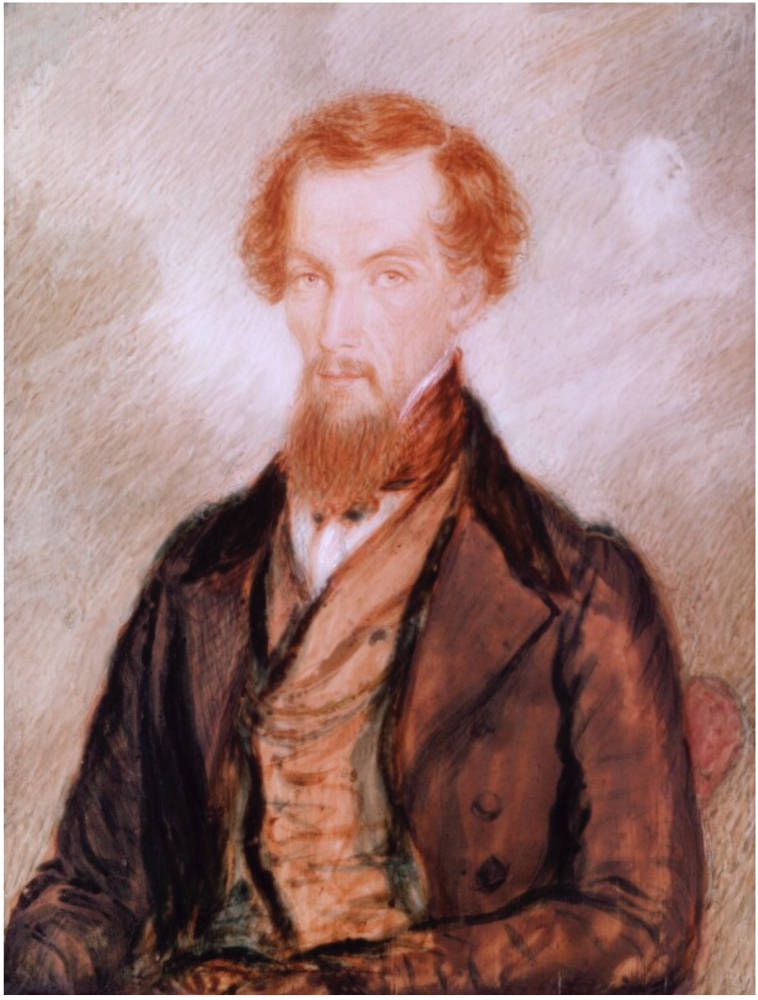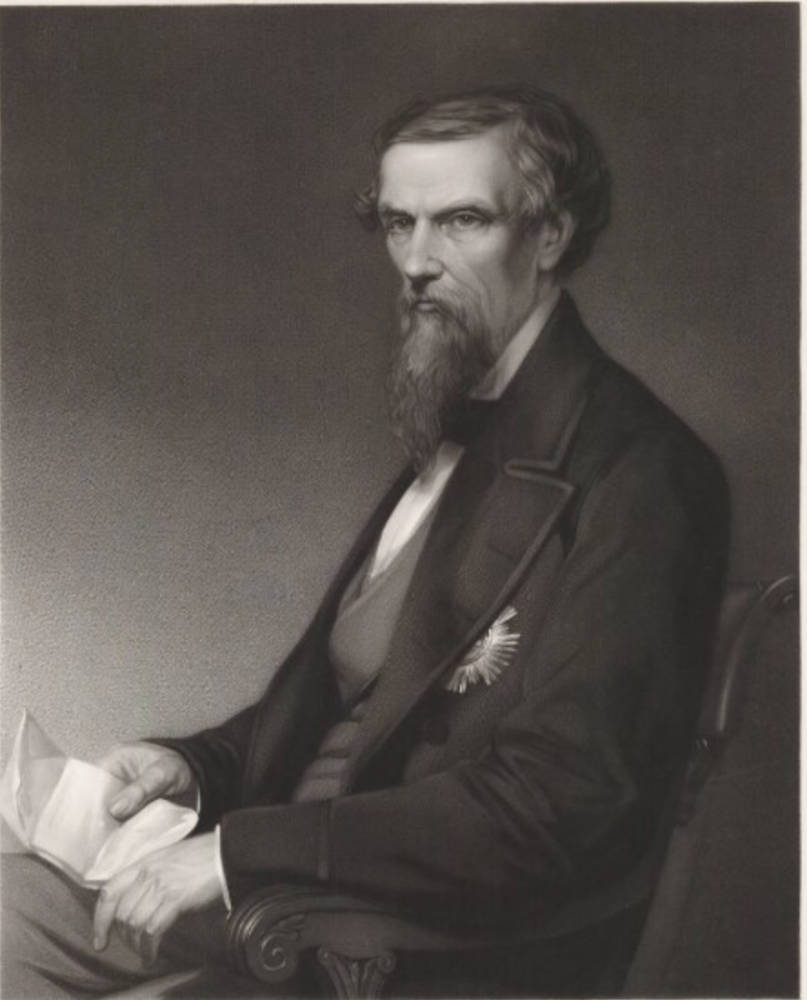The following paragraphs from the Internet Archive online version of Lawrence’s Essays’s on British India has particular importance because it immediately precedes the 1857 Mutiny and the subsequent major shift in its status as it came under the direct control of the British government rather than that of the East India Company, a private company. — George P. Landow]
We belie or deceive ourselves when we declare or fancy that our Government is maintained otherwise than by the sword. — Sir Henry Lawrence


In the 1840s Sir Henry Montgomery Lawrence, K.C.B. Chief Commissioner in Oude, and Provisional Governor-General of India, published a series of essays in the Calcutta Review , which which W. H. Allen republished two years after his death during the 1857 Mutiny. Although necessary changes and improvements of the armed forces of the East India Company and British government forces in India dominated these essays, Lawrence also called for opening the officer ranks to natives of the sub-continent and made clear he thought that the British conquest of India by Clive, the future Duke of Wellington, and others was little more than criminal.
Nonetheless, Lawrence also managed to find justifications for continued British rule, the first of which is a claim that the British conquest of India (which was far from complete at the time he wrote) had brought peace to an area whose constituent, often transient, kingdoms were continually at war.
At first sight, bayonets and red coats do not appear to be precisely the instruments of Government which a philanthropist would advocate; but we belie or deceive ourselves when we declare or fancy that our Government is maintained otherwise than by the sword. And in pronouncing it to be so, we are far from admitting that it must therefore be one of oppression. The land that has for nearly a thousand years been held by the sword, and that has as often changed hands as that sword has been blunted, or the grasp that held it relaxed; the land that knows no principality of longer standing than our own; that in its length and breadth, within the last fifty years, has seen Moguls, Patans, Mahrattahs, Pindarees; and mixed miscreants of every caste and clan rooting up the old families, and settling themselves in their places. [4-5]
With such a history, Lawrence argues, “bayonets and red coats” remain essential, and he asks rhetorically, “how could any Grovernment, however beneficent, subsist for a day simply by its civil policy on the ruins of such a tempest-tost land? How in a day convert tribes who have lived only by war to habits of peace; how make cultivators, who for centuries have never paid a rupee, but under fear of the sword or the scourge — how induce them to pay their dues, unless they know that the civil officer has the power of calling in the military : and that the latter is prompt and bold? [5-6]
Lawrence’s related claim again draws upon the history of South Asia when he argues that the lands under the control of both the East India Company — this essay was written more than a decade before the 1857 Mutiny and the British government’s assumption of power — offers the native inhabitants better conditions for life and work and a much more honest, just court system.
To support this argument he turns first to the Muslim rulers, the latest before the British to conquer large portions of India:
Utter selfishness was the Moslem motive; the high roads, the seraes, the plantations — were they for the people? Not at all, but for the royal progresses to Cashmere. The expense of one Badshahi serae would have built a dozen for the people. Throughout the country it was the same. In the direction the king was likely to travel there would be roads and conveniences; but elsewhere the people might sigh in vain for paths, for water, or for shelter. The Newabs of Oude, and Kings of Juanpore and of the Deccan did the same. They beautified the neighbourhood of their own favourite residences, made roads to their country seats, built bridges over the rivers in their way, sunk splendid wells and planted lines of trees. Some of our own magistrates in the times of the good old close-borough system did the same; and to this day European convenience is more regarded than native wants — the collector-and-magistrate being often considered more sacred than the thousands of poor around him.
The same lack of responsibility for the safety, prosperity, and happiness of native inhabitants appeared in earlier and contemporary Hindu rule: “Wars and their train of ills were not confined to the Mahommedan times or States, in India. A glance at the old Hindoo annals will allow that if the country so suffered in Moslem times, it was not more free from such distractions in what are called the bright days of Hindoo supremacy.”
Lawrence then reminds his readers that even the Hindu rulers were not the original owners of these lands: “Everywhere we see that the present occupants of the soil are not the aboriginals; and almost every district in India has its peculiar legend, how a Rajpoot, or other band, drove out, or enslaved the original holders; while another tale will perhaps tell of how the late conquerors were themselves overwhelmed; and how they eventually merged into another and bolder race.” Lawrence therefore emphasizes what he takes to be a key point when he states, “We doubt whether India was ever under an universal monarch; and the Kings of the Hindoo States of Oude, Kanouge, Muttra, Hustunapore (Delhi), &c., &c., played but the game that warriors of every age and every clime have ever played. They prospered, or sank; they conquered, or were themselves led captive; and then, as in later days, independent kingdoms disappeared, and small States rose into great ones.” Not content with the usual and tolerably- sufficient grounds for war, we read that Prithora the brave, the hero of a hundred fights, amused himself with carrying off the brides of the several kings, of whose intended marriage he had information. He thus brought on himself many wars, and eventually thereby lost his throne — ^but he lost no credit, and is to this day the hero of Eajpoot Eomance. It would seem, indeed, to be mere idleness to write and talk of the happiness and purity of a people, who deified the perpetrators of every crime, and whose very worship sanctioned every abomination. [7/8]
“A happy admixture of a just civil administration with the strong hand”
Having offered these several reasons that justify Britain’s ownership of a territory that lies on the other side of the globe, he turns to the means of preserving it by offering the conquered peoples a kind of stability, justice, and freedom that successive waves of previous conquerors had not. Having begun by pointing out the continued present necessity of “bayonets and red coats,” he argues that fair, just government will in fact serve English domination more than military dominance: “we feel strong in our hearts the conviction that one good magistrate may be better than a regiment; one sound law, well administered, better than a brigade: . . . that a happy admixture of a just civil administration with the strong hand will retain the country in peace and happiness as long as it is good that we should hold it.” Pointing out that the British, the latest in a wave of conquerors, must avoid all ignorant self-satisfaction and sense of superiority and try to understand what a right understanding of “is best for India . . . by a close study of its past history; of the mistakes, and the injustice of former rulers, Hindoo, Mahommedan, and European” (11-12).
Lawrence, who urged that the East India Company had to secure the loyalty of native troops by promoting the most able of them to the officer class, had also pointed out the urgent need for reforming large parts of the army including the artillery, cavalry, engineering and quartermaster corps. Lawrence died in the 1857 Mutiny, but it took far longer for his recommendations to be accepted and acted upon — as England's disasters in the Crimea demonstrated.
Bibliography
Lawrence, Sir Henry Montgomery. Essays, Military and Political, Written India. London: W. H. Allen, 1859. Internet Archive. Inline version of a copy in the University of California Library. Web. 7 November 2018.
Last modified 3 January 2019